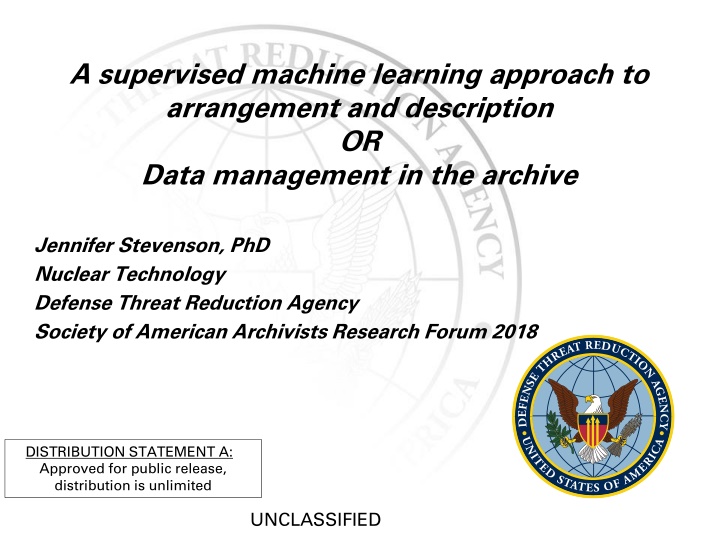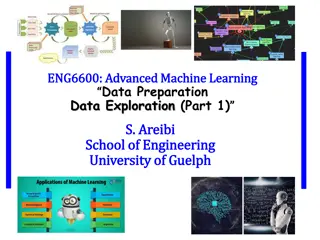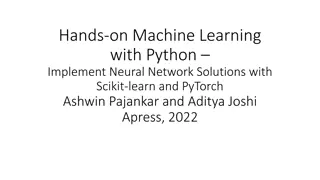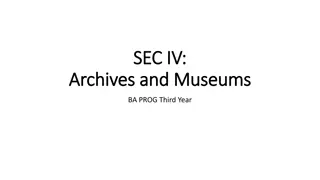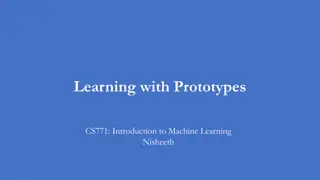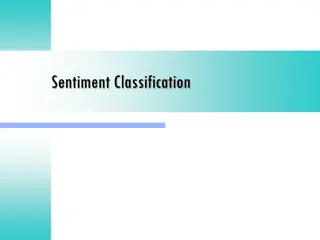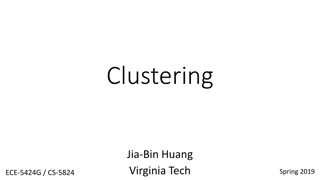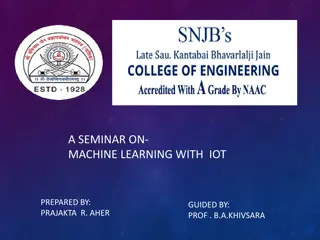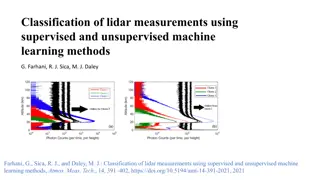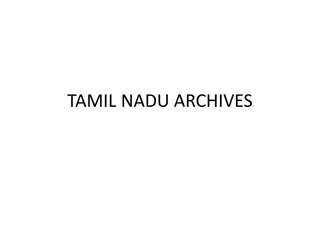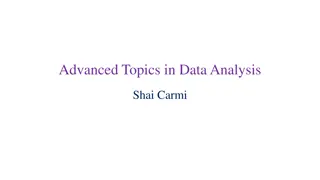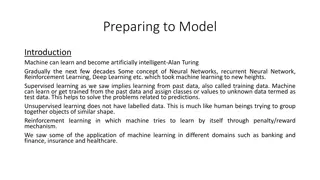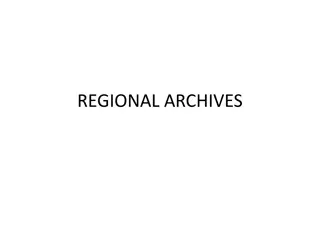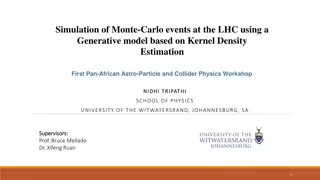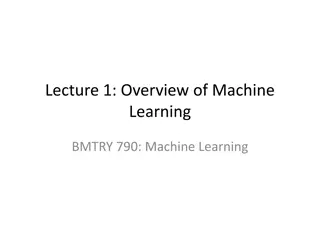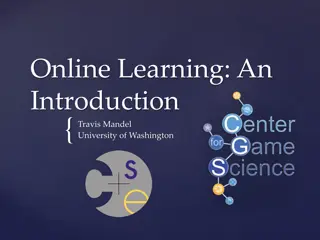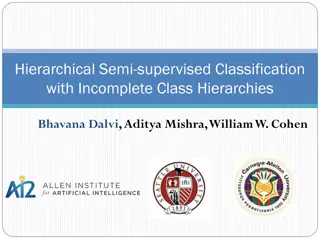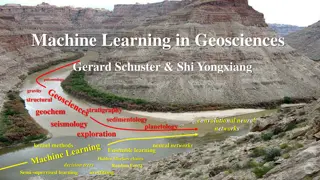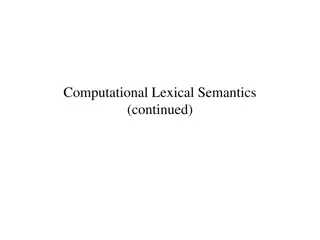Supervised Machine Learning for Data Management in Archives
In this study by Jennifer Stevenson, a supervised machine learning approach is proposed for arrangement and description in archives, specifically focusing on the DTRIAC collection which contains a vast amount of historical documents related to nuclear technology. The aim is to expedite the cataloging process by automatically assigning metadata to digitized items. The project involves training a machine learning algorithm model on selected metadata elements and evaluating its effectiveness on unidentified items. The goal is to test the efficiency of machine learning technologies in learning from human-assigned metadata and improving metadata assignment processes in archival management.
Download Presentation

Please find below an Image/Link to download the presentation.
The content on the website is provided AS IS for your information and personal use only. It may not be sold, licensed, or shared on other websites without obtaining consent from the author.If you encounter any issues during the download, it is possible that the publisher has removed the file from their server.
You are allowed to download the files provided on this website for personal or commercial use, subject to the condition that they are used lawfully. All files are the property of their respective owners.
The content on the website is provided AS IS for your information and personal use only. It may not be sold, licensed, or shared on other websites without obtaining consent from the author.
E N D
Presentation Transcript
A supervised machine learning approach to arrangement and description OR Data management in the archive Jennifer Stevenson, PhD Nuclear Technology Defense Threat Reduction Agency Society of American Archivists Research Forum 2018 DISTRIBUTION STATEMENT A: Approved for public release, distribution is unlimited UNCLASSIFIED Unclassified
Outline DTRIAC collection Machine learning 101 and project plan DTRIAC Machine learning Project phases Implications UNCLASSIFIED Unclassified 2
DTRIAC Collection at a Glance Collection base, 1944 to present 500,000 documents 20% digitized Over 150,000 fully digitized and available Over 400,000 Cataloged records, Indexed by Author, Title, and Abstract Over 1.5 million inventoried documents 20,000 films 5% digitized 70mm, 35mm, 16mm, 8mm, VHS 2,000,000 still photos - <1% Other media types Over 18,000 test drawings Several thousand MagTapes Microfilm, microfiche, computer printouts, etc. Majority of older records contain nuclear weapons testing/effects data that cannot be recreated UNCLASSIFIED Unclassified 3
Machine learning, Example part 1 Nuclear test Above ground testing Below ground testing UNCLASSIFIED Unclassified 4
Machine learning, example part 2 Below ground testing Hunter s trophy, 1992 Atmospheric information i.e. weather conditions Location Operation names, shots Unclassified UNCLASSIFIED 5
Assessment in real time Results = 30 items Hunter s trophy Hunters trophy Huntrs trophy High altitude shock High altitude socks UNCLASSIFIED UNCLASSIFIED Unclassified 6
DTRIAC Machine learning Purpose: Test the effectiveness of machine learning technologies Learn from human assigned metadata Automatically assign metadata to digitized items Expedite the process of cataloguing 12,000 cu feet Process: Selection of metadata elements and review Creation of training set Development of machine learning algorithm model Application of algorithm to 100 un-identified items and manually review the 100 items Find agreement rate Review effectiveness Unclassified UNCLASSIFIED 7
End state: Machine learning as a tool Time saving scalability tool Not a replacement for manpower but is a force multiplier Metadata tag 100 items instead of 5 million Will create a stronger search feature Ability to create ad hoc research from reliable and sound data Makes inaccessible information accessible UNCLASSIFIED Unclassified 8
Implications Archival process and machine learning MPLP Machine learning suggests . . . Archivists richly describe small unprocessed portions of archival holdings Feed into supervised machine learning, allowing the machines to overcome the scale of the collections UNCLASSIFIED UNCLASSIFIED Unclassified 9
Background Key Department of Defense source of information and analysis on nuclear and conventional weapons-related topics DTRIAC collection purpose Perform analyses on DTRA-internal and community-wide nuclear/conventional weapons phenomena Effects and technology matters Related nuclear/conventional technology transfer applications DTRIAC collection Atmospheric testing era from 1946 to 1962 Scientific data relating to fireball physics, shock-wave physics, and early-time and late-time cloud behavior UNCLASSIFIED Unclassified 11 1
Project phases Phase I Training with a small subset of the collection Gradually phase in material in sets of 10,000 Training by metadata Phase II Semantic meaning Phase III Identification of tables, charts UNCLASSIFIED Unclassified 12
Work timeline Average 20 pages per document 1 minute per 10 million minutes = 19.0258752 years Unclassified UNCLASSIFIED 13
Current DTRA Information Analysis and Preservation Authority the following Department of Defense Information Analysis Center is assigned to the Defense Atomic Support Agency (DASA): DASA Data Center DASA will be solely responsible for programming, budgeting, financing and administering this center for use as a Department of Defense-wide information source. Aug 3, 1964 Unclassified UNCLASSIFIED 14
Current DTRA Information Analysis and Preservation Authority DoD Inst 5015.3 April 27, 1987 Subj: US Nuclear Test Data Preservation The Defense Nuclear Agency (DNA) shall be the DoD executive agency responsible for all matters related to nuclear test programs and records disposition. DNA will provide for safeguarding and effective control of these records with the support of DASIAC, the DoD Nuclear Information and Analysis Center. Unclassified UNCLASSIFIED 15
